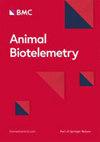Diagnosing predated tags in telemetry survival studies of migratory fishes in river systems
IF 2.5
3区 环境科学与生态学
Q2 BIODIVERSITY CONSERVATION
引用次数: 0
Abstract
Background Acoustic telemetry is a powerful tool for studying fish behavior and survival that relies on the assumption that tag detection reflects the presence of live study subjects. This assumption is violated when tag signals continue to be recorded after consumption by predators. When such tag predation is possible, it is necessary for researchers to diagnose and remove these non-representative detections. Past studies have employed a variety of data-filtering techniques to address the issue, ranging from rule-based algorithms that rely on expert judgements of behavior and movement capabilities of study subjects and their predators to automated pattern-recognition techniques using multivariate analyses. We compare four approaches for flagging suspicious tracks or detection events: two rule-based expert-opinion approaches of differing complexity and two unsupervised pattern-recognition approaches with and without data from deliberately tagged predators. We compare alternative approaches by applying these four filters to a case study of survival estimation of acoustic-tagged juvenile Chinook salmon ( Oncorhynchus tshawytscha ) in the San Joaquin River, California, United States. Results Filtering approaches differed in the number and composition of tags suspected of being consumed by predators; the largest differences occurred between the two broad categories, rule-based versus pattern recognition. All methods required some investigator judgement and all flagged a small subset (5%) of suspicious tags that had exceptionally long residence times and evidence of upstream transitions; 27% of tags showed evidence of predation based on at least one filter. The complex rule-based filter deemed the most tags suspicious (21%) and the simpler pattern-recognition method the fewest (10%). Reach-specific survival estimates from the four filters were mostly within 2% of the unfiltered estimates, but differences up to 11% were observed. Conclusions Sensitivity of survival results to tag predation and predator filtering depends on the study setting, spatiotemporal scale of inference, and habitat use of predators. Choice of filtering technique depends on the data available and knowledge of the study system. We recommend that survival studies include clear documentation of filtering methods and report on robustness of results to the filtering approach selected.河流系统中洄游鱼类遥测生存研究中的捕食标签诊断
背景声学遥测是研究鱼类行为和生存的强大工具,它依赖于标签检测反映活体研究对象存在的假设。当捕食者食用后标签信号继续被记录时,这一假设就被违反了。当这种标签捕食成为可能时,研究人员有必要诊断并消除这些不具代表性的检测。过去的研究采用了各种数据过滤技术来解决这个问题,从依赖于专家对研究对象及其捕食者的行为和运动能力判断的基于规则的算法,到使用多元分析的自动模式识别技术。我们比较了四种标记可疑轨迹或检测事件的方法:两种基于规则的不同复杂度的专家意见方法和两种无监督的模式识别方法,有和没有来自故意标记捕食者的数据。我们通过将这四种滤波器应用于美国加利福尼亚州圣华金河声学标记幼年奇努克鲑鱼(Oncorhynchus tshawytscha)生存评估的案例研究,比较了替代方法。结果筛选方法在怀疑被捕食者吃掉的标签数量和组成上存在差异;最大的差异出现在基于规则的识别和模式识别这两大类之间。所有方法都需要一些研究人员的判断,所有方法都标记了一小部分(5%)可疑标签,这些标签的停留时间异常长,并有上游转移的证据;27%的标签显示出基于至少一个过滤器的捕食证据。基于规则的复杂过滤器认为可疑标签最多(21%),而更简单的模式识别方法认为可疑标签最少(10%)。四个滤波器的Reach特异性生存率估计值大多在未滤波估计值的2%以内,但观察到差异高达11%。结论生存结果对标记捕食和捕食者过滤的敏感性取决于研究环境、推理的时空尺度和捕食者的栖息地使用。过滤技术的选择取决于可用的数据和研究系统的知识。我们建议生存期研究包括明确的过滤方法文档,并报告结果对所选过滤方法的稳健性。
本文章由计算机程序翻译,如有差异,请以英文原文为准。
求助全文
约1分钟内获得全文
求助全文
来源期刊

Animal Biotelemetry
Agricultural and Biological Sciences-Animal Science and Zoology
CiteScore
4.20
自引率
11.10%
发文量
33
审稿时长
10 weeks
期刊介绍:
Animal Biotelemetry is an open access peer-reviewed journal that publishes the results of studies utilizing telemetric techniques (including biologgers) to understand physiological, behavioural, and ecological mechanisms in a broad range of environments (e.g. terrestrial, freshwater and marine) and taxa. The journal also welcomes descriptions and validations of newly developed tagging techniques and tracking technologies, as well as methods for analyzing telemetric data.
 求助内容:
求助内容: 应助结果提醒方式:
应助结果提醒方式:


